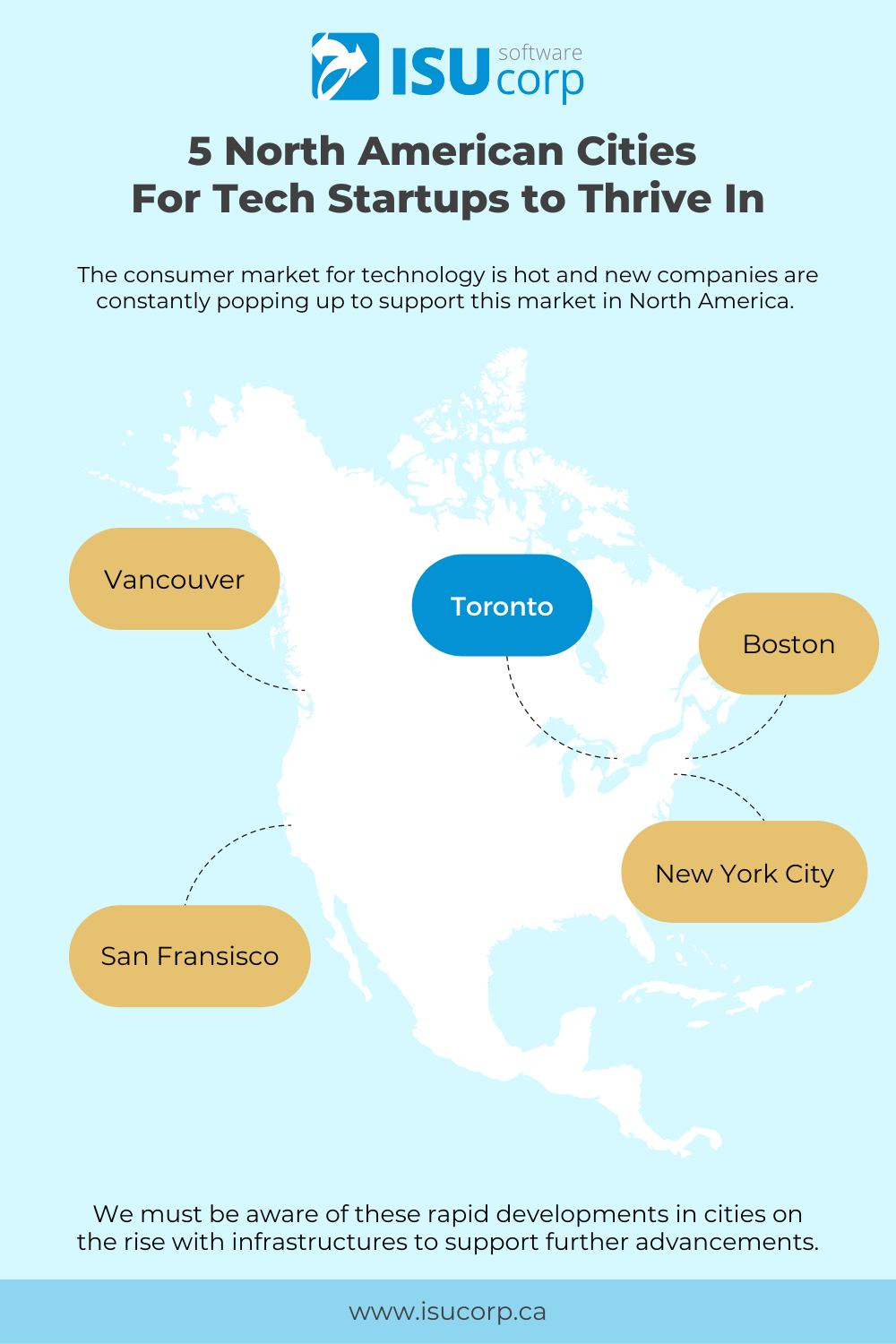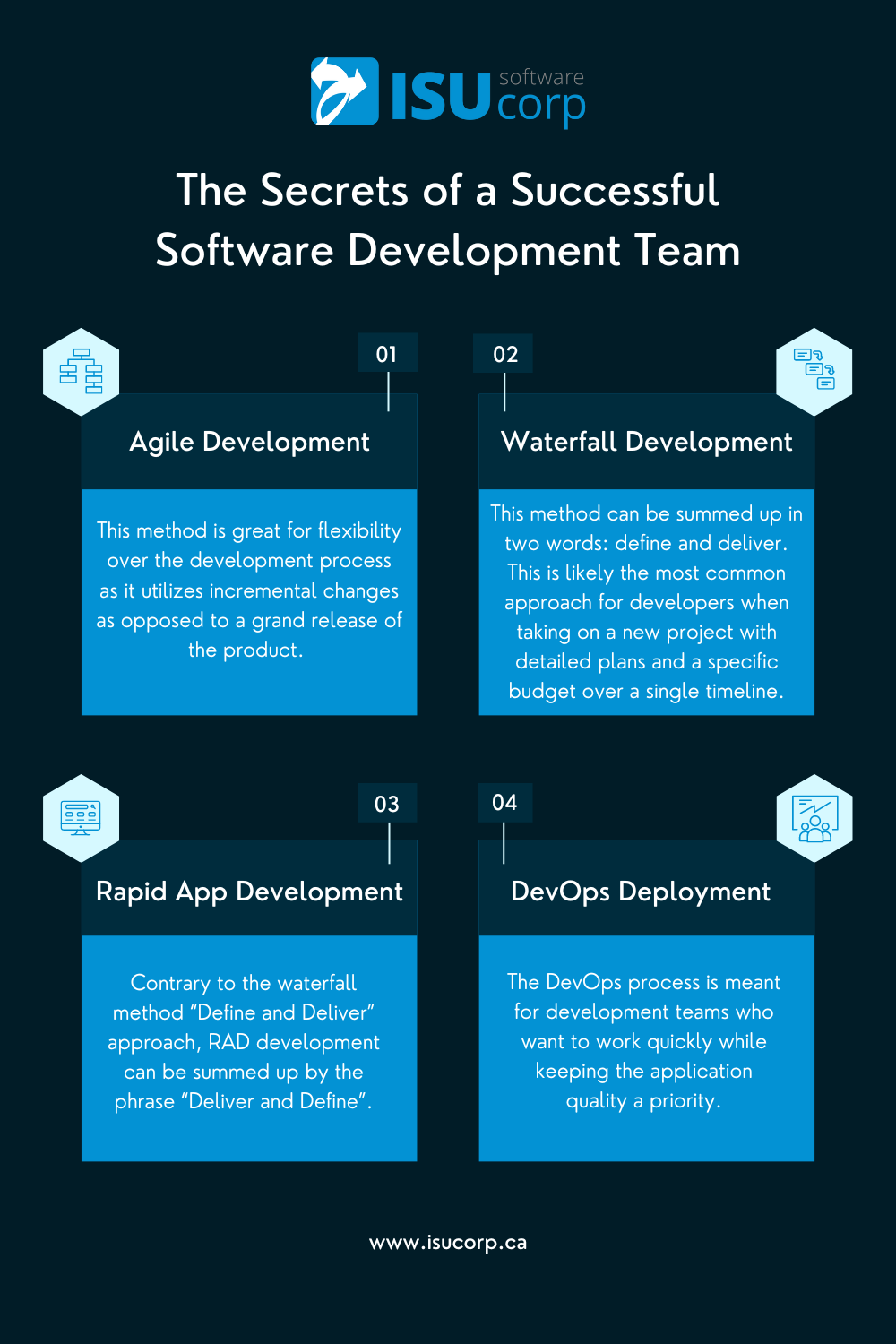What names come to mind when we think of the places around the world that are considered “tech hubs”? Typically Silicon Valley, Tokyo, Barcelona, or Tel Aviv are all common answers since these places are prominent for innovation. In today’s society, there is a widespread movement toward digital governance of everyday life. With the influence of companies such as Apple, Google, Amazon, and Netflix (to name a few) there is never time to be bored. The consumer market for technology is hot and new companies are constantly popping up to support this market in North America. We must be aware of this future and the cities on the rise with infrastructures to support further advancements.
In a post-pandemic world, the economy is still recovering from the struggle faced by many businesses. The technology sector certainly felt the blow from this as issues with manufacturing and distribution were a big hit. When it comes to an economic downturn, any sign of strength in times of uncertainty is likely to have a ripple effect on morale within an industry. Tech sectors emerging within major cities are a great example. Let’s dive further into it.
Northern California was the largest hub for the technology market for a long time. Today, several cities in North America are coming out strong in the tech sphere. America remains home to the world's biggest technology companies, making it a default attraction for ambitious entrepreneurs looking to launch their businesses. However, startups need to know specifics and certainly won’t limit their long-term growth based on geography. With that being said, here are some cities that may be on their horizon:
Boston
SaaS (Software as a Service) companies such as Akamai, Robin, Hubspot, and SEMRush are just a few of the major organizations settled in Boston, Massachusetts. This is due in part to a couple of reasons. The first is the increase that the city is seeing in graduates from Science, Technology, Engineering, and Mathematics (STEM) related fields. This has opened the talent pool up dramatically. Not to mention that the state is home to Harvard, MIT, Boston College, and Boston University. The city saw an increase of over 7% in employed tech specialists from 2015-2020. A startup looking to build a network and take advantage of a booming market would be wise to consider a future in Boston.
New York
Startups eager to prove themselves to investors will be pleased to know that in 2021, New York City venture-backed companies saw funding of over $52 billion. The majority of the funding was allocated to startups in industries such as software, IT, healthcare, and financial services. The fast-growing tech space in NYC is home to nearly 300,000 jobs with an output of around $125 billion to the economy. This market is extra hot right now, especially with the impetus from those returning or migrating to the city since the recovery from the early days of the pandemic. The next 5 years of this market are unforeseeable but certainly, we can expect to see further growth.
Toronto
Ranked as the 9th fastest growing tech city in the world and the most multicultural, Toronto Canada is a city that embraces innovation and collaboration. Technology is a focal point of the city's job market, with a 68.9 index score in the tech talent market and accounting for 88,900 jobs from 2016-2021. Additionally, this contributed more than $8 billion in employee wages yearly. Big companies have recognized the city's value which has introduced the city to companies such as Google, Netflix, Uber, Shopify, and Amazon. Now, Toronto is far from the new Silicon Valley which saw $132 billion invested into tech startups in 2021-2022. Toronto sits around the $5.4 billion range but this is still consistent growth year over year, which speaks to the level of talent in the area.
San Francisco
A primary location for startups in North America is without question San Francisco. Housing Silicon Valley, the San Francisco Bay Area is a notorious tech bubble with companies such as Apple, Google, Microsoft, Uber, and Facebook establishing their headquarters here. The reputation and infrastructure of the area allow for a couple of benefits that include consistent attention from investors and high-quality workers. When it comes to workers, the tech talent pool in the Bay Area is among the largest in the world with over 370,000 tech industry professionals. As well, the proximity of colleges such as Stanford and SFSU makes it a breeding ground for talent in the labour market.
Vancouver
Startups in Vancouver (nicknamed Techcouver) have seen tremendous growth over the last 10 years, specifically from 2019 - 2020 when the technology sector grew by 21%. The city reported 6% annual growth in the tech hub year over year. Vancouver-based tech companies are certainly making the most of this market as more than ten thousand of them bring in a revenue of more than $23 billion. This has made the city’s tech giants a major contributor to the province's GDP (adding more than $15 billion). Though Vancouver’s tech leaders are not on par with the likes of Toronto (who saw a 26% growth from 2019 - 2020), it is certainly bringing value to the table.
What’s Next?
We can see that the tech market brings major profitability to the cities with the markets for it, which then brings attention from big name companies. This leads to jobs which attract citizens and consumers, all of which are in the best interest of a major city. There are numerous places for a startup to get its feet wet and for consumers to locate providers. No longer will anyone have to limit their view of tech hubs to Northern California. When it comes to tech startups, all of this information should scream one-word: potential. Even what seems great right now is likely amid growth and your business could be the next major contributor.
Written By Ben Brown
We work with successful companies to increase their net profits using exceptional custom software solutions, contact us here to see how we can help your business grow!
















